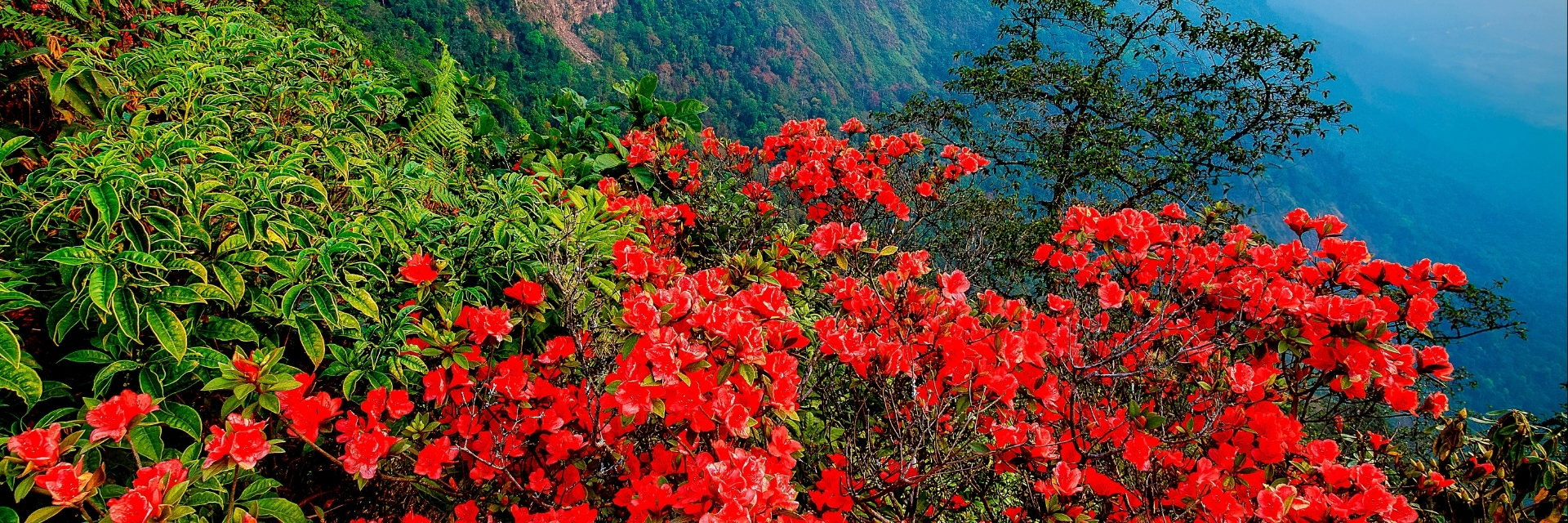⛰️🌳🍁 Phu Luang ... garden of paradise in the northeastern of Thailand 🍁🌳⛰️
☘️ Take a walk through a forest that is said to have the most natural vegetation in the Northeast, "Phu Luang", Phu Ruea District, Loei Province.
🌿 This trip is a short hike on the Lan Suriyan Nature Trail, Phu Luang Wildlife Sanctuary. The distance is 1.8 kilometers and it takes about 1.30-2 hours to walk slowly. You can visit both in the morning and in the evening or stay overnight. The beauty of nature on this trail makes you feel as if you are walking in a garden of paradise.
⏱️ The best season for nature study and viewing flora on Phu Luang is from November to May. From late December to early mid-January, you can see red maple leaves. From January to March, red and white wild roses are in full bloom, as well as many types of wild orchids.
✅ In this review, we has information you should know before going to Phu Luang, such as travelling, booking accommodation in Phu Luang Wildlife Sanctuary, restaurant, preparing trekking equipment, and various regulations.
✨ Come and get to know “Phu Luang” before planning your trip.
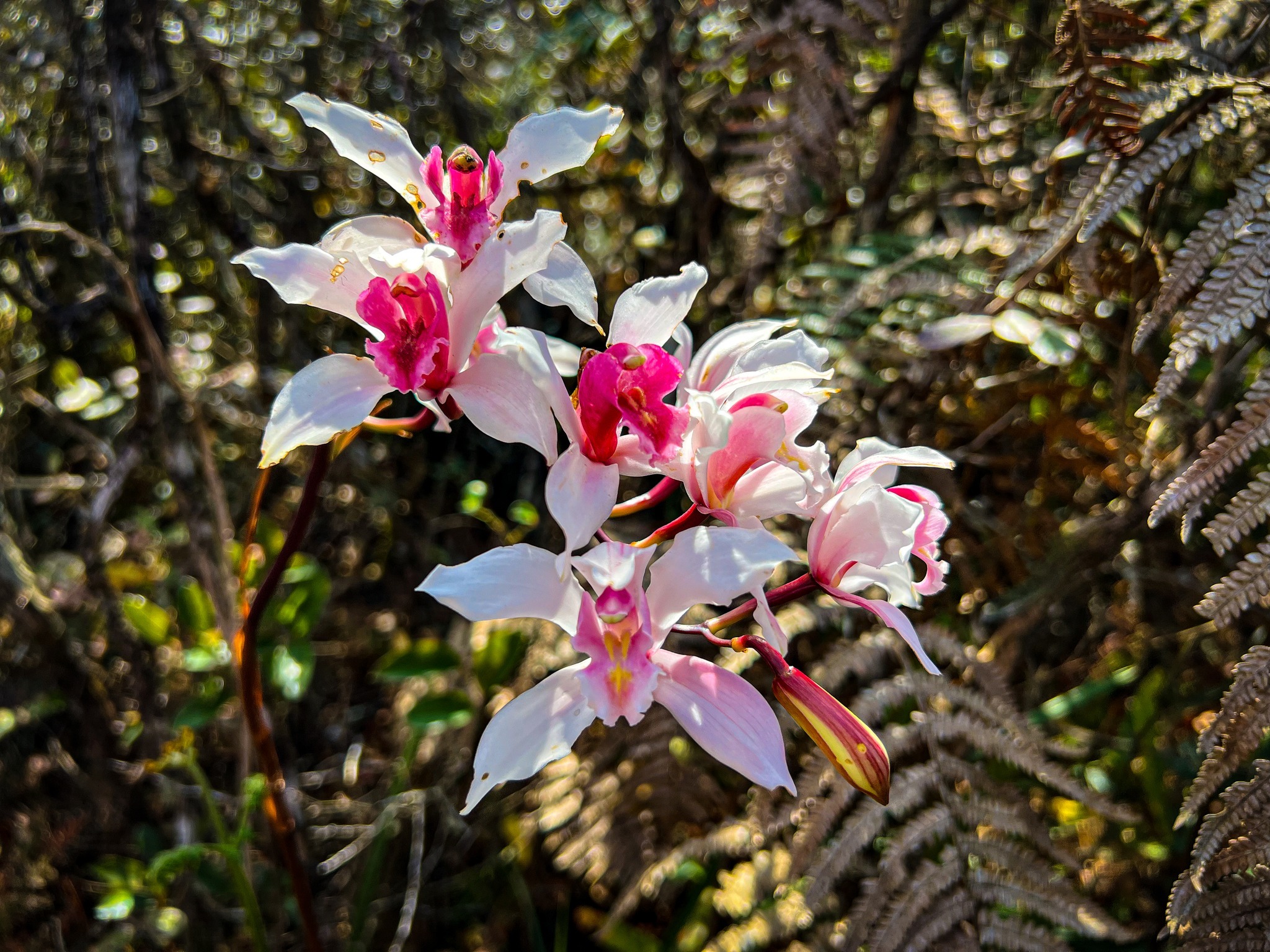
“Phu Luang” means “high mountain” and covers an area of approximately 848 square kilometers, covering Phu Luang District, Dan Sai District, Phu Ruea District and Wang Saphung District, Loei Province. It was declared as Phu Luang Wildlife Sanctuary on December 18, 1974.
The topography is a steep mountain range, with an elevation of 400-1,571 meters above sea level. The eastern mountain range has a plain on the ridge (Lang Pae), while the western side is a high, undulating mountain range. The eastern mountains are steep cliffs sloping down to the west. It is the origin of the Loei River and the Pa Sak River.
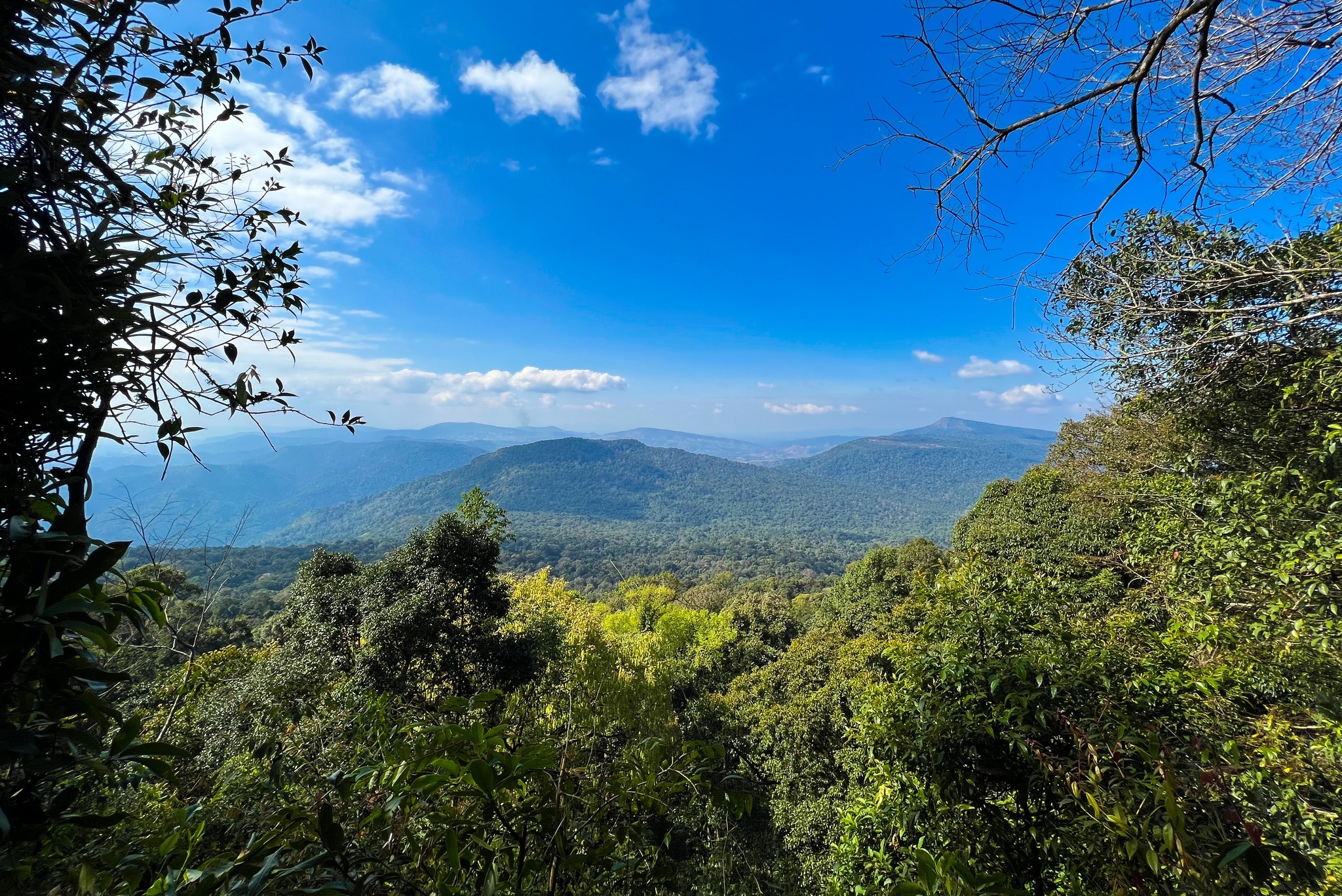
Climate characteristics, Due to the mountainous and plateau terrain, the climate is colder than other areas of the Northeast. Summer is from February to April with an average temperature of 24 degrees Celsius. The rainy season is from May to October. The winter season is from November to January with an average temperature of 4-6 degrees Celsius.
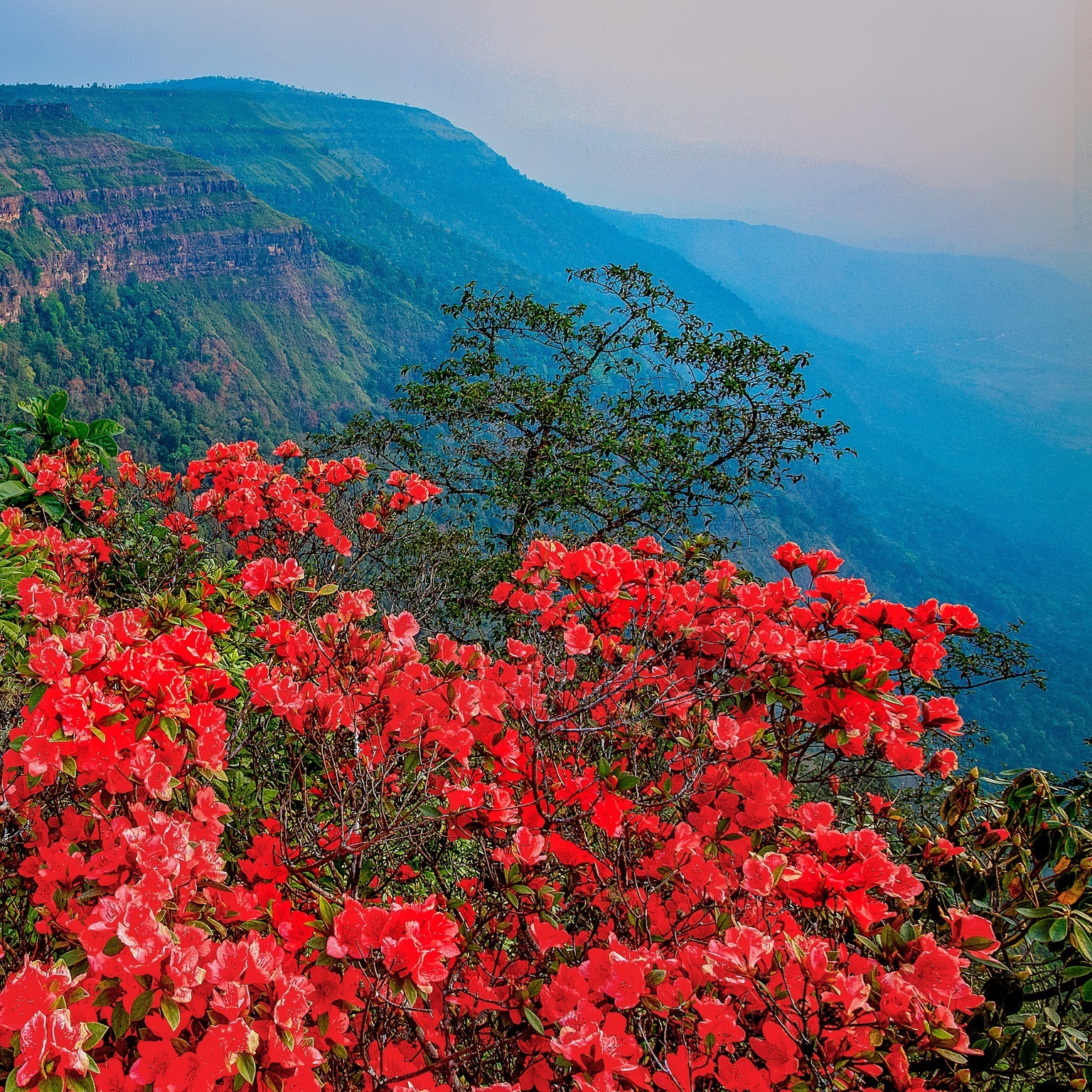
Phu Luang Wildlife Sanctuary Office is located in Tha Sala Subdistrict, Phu Ruea District, Loei Province.
Location : https://maps.app.goo.gl/z7G7LiUJeb5ZHdBr7
The main tourist attraction in Phu Luang Wildlife Sanctuary is the Khok Nok Kraba Forest Protection Unit, located in the middle of the forest, approximately 14 kilometers from the Phu Luang Wildlife Sanctuary head office.
Location of the Khok Nok Kraba Forest Protection Unit: https://maps.app.goo.gl/3cZdZvS7YLaooMVF7
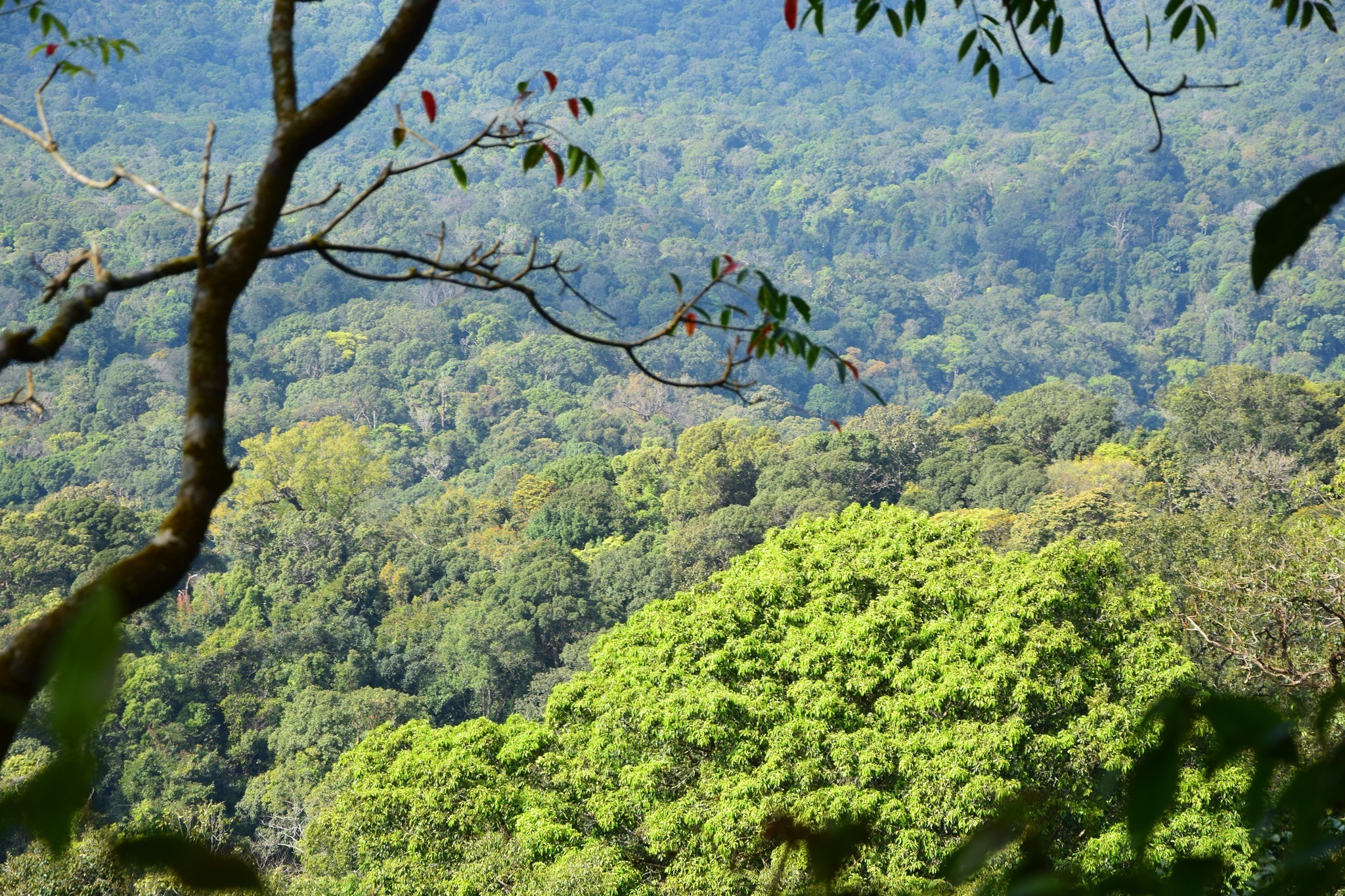
Follow news and inquire about various information about Phu Luang Wildlife Sanctuary at Facebook : เขตรักษาพันธุ์สัตว์ป่าภูหลวง-จังหวัดเลย
☎️ 06 4024 0743
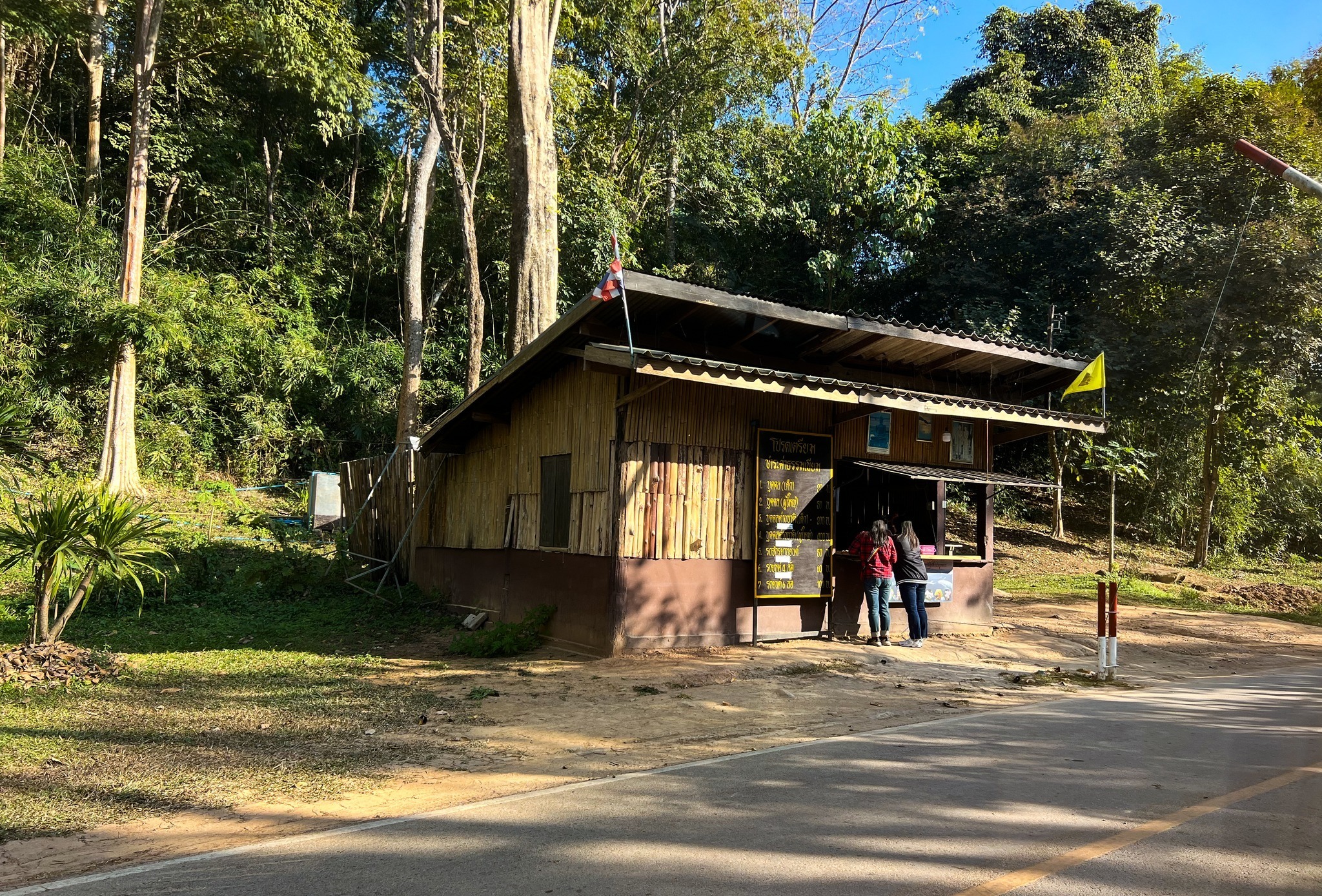
Travelling to Phu Luang Wildlife Sanctuary.
From the main road, Highway No. 203 (Phu Ruea - Loei), take the route heading towards Loei town for about 17 kilometers until you reach the Ban San Tom School intersection. Turn right into the alley next to the school, Highway No. Loei 2023. Go straight for about 12 kilometers until you reach the Phu Luang Wildlife Sanctuary office.
Tourists must pay the entrance fee to Phu Luang Wildlife Sanctuary at the checkpoint in front of the sanctuary office.
Phu Luang Wildlife Sanctuary entrance Fee.
Adults 400 baht, Children 200 baht.
Four-wheeled vehicles: 60 baht.
Six-wheeled vehicles: 100 baht.
Motorcycles: 30 baht.
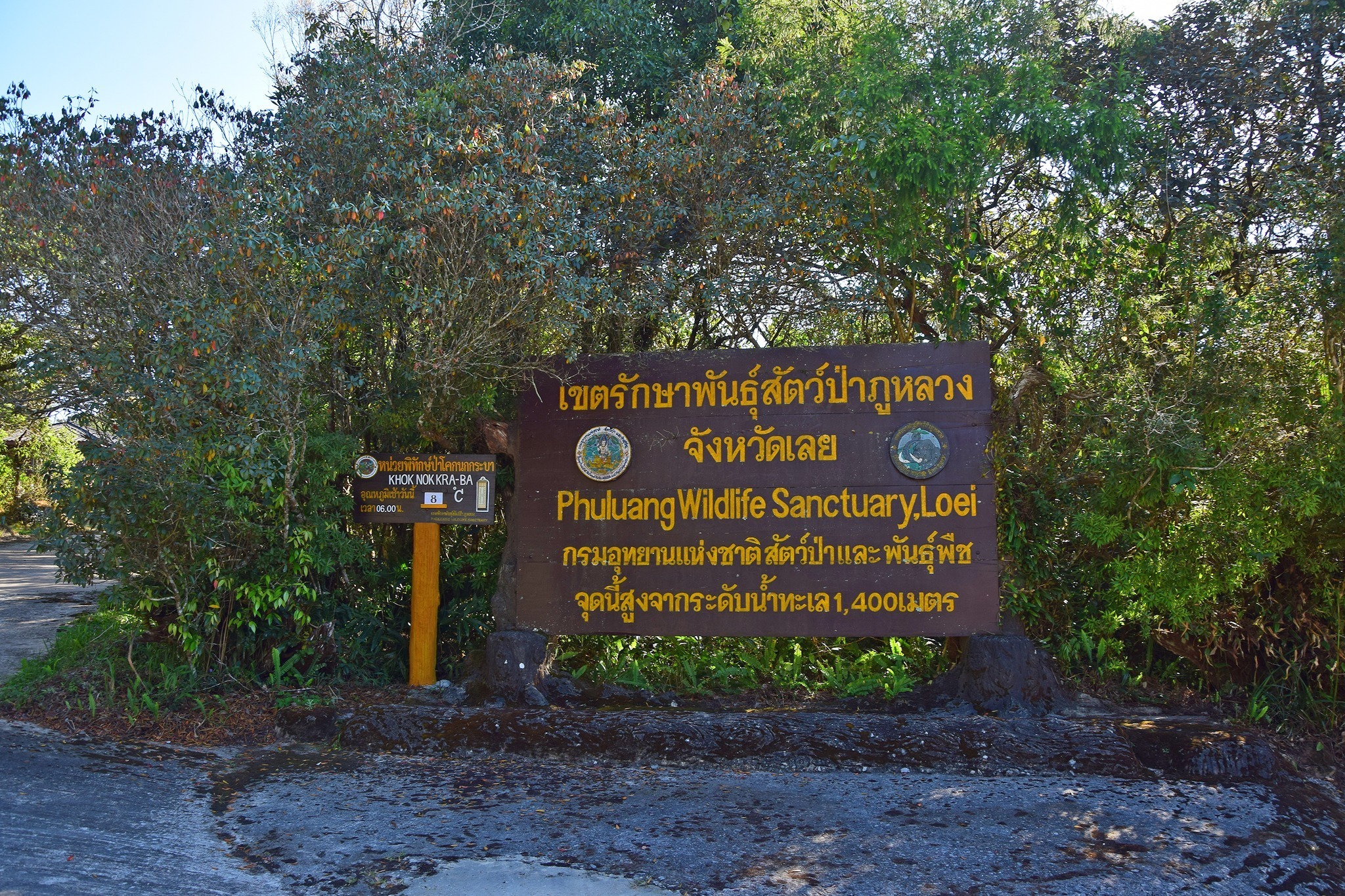
The checkpoint will open for vehicles to go up Phu Luang from 8:30 a.m. onwards and will close for vehicles to go up and down Phu Luang at 4:00 p.m. This is for the safety of tourists from dangers from wild animals that come out to hunt for food during the evening until dawn.
From the checkpoint of Phu Luang Wildlife Sanctuary, drive up the mountain for another 14 kilometers to reach the Khok Nok Kraba Forest Protection Unit, which is the main tourist attraction of Phu Luang.
From the entrance of the main road to the Kok Nok Kraba Forest Protection Unit, the road is two-way road with one lane in each direction asphalt road. The section from the checkpoint to Kok Nok Kraba is an uphill road with some curves, but not too steep. All types of vehicles can travel. It is recommended not to drive fast because wild animals may cross the road.
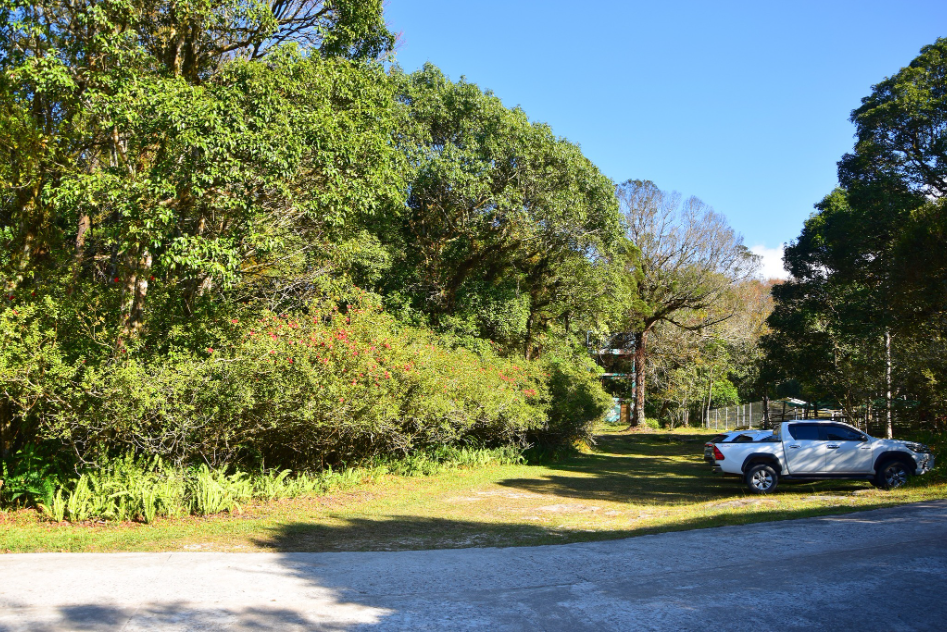
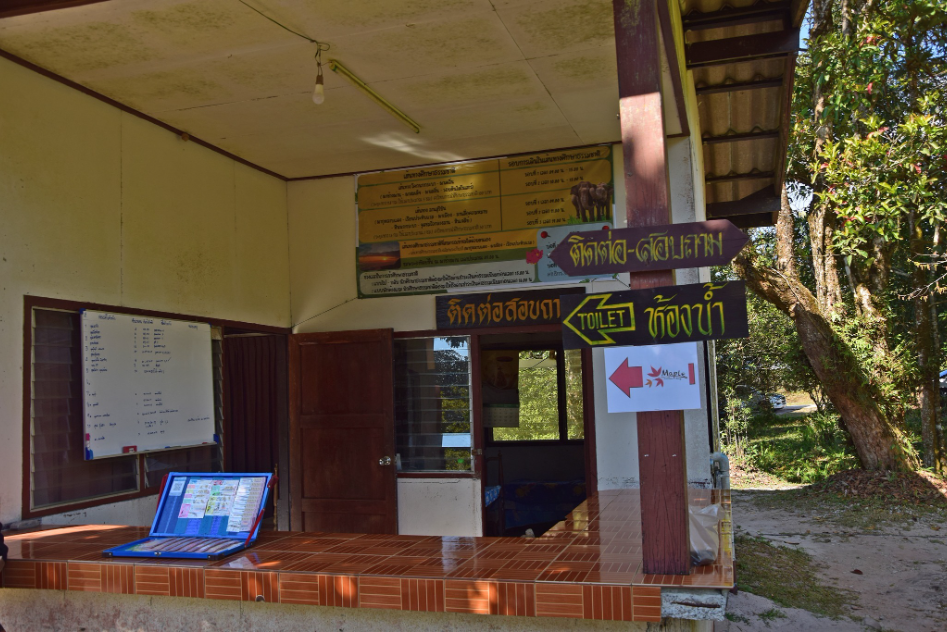
There is a spacious parking lot at the Khok Nok Kraba Forest Protection Unit. This area is also another spot to see red wild roses in bloom.
Tourist Service Center, Kok Nok Kraba Forest Protection Unit.
When you arrive, it is recommended that you come to register with the officers first. There will be officers who will take you on a short nature study trail, in groups of no more than 10 people per officer, free of charge.
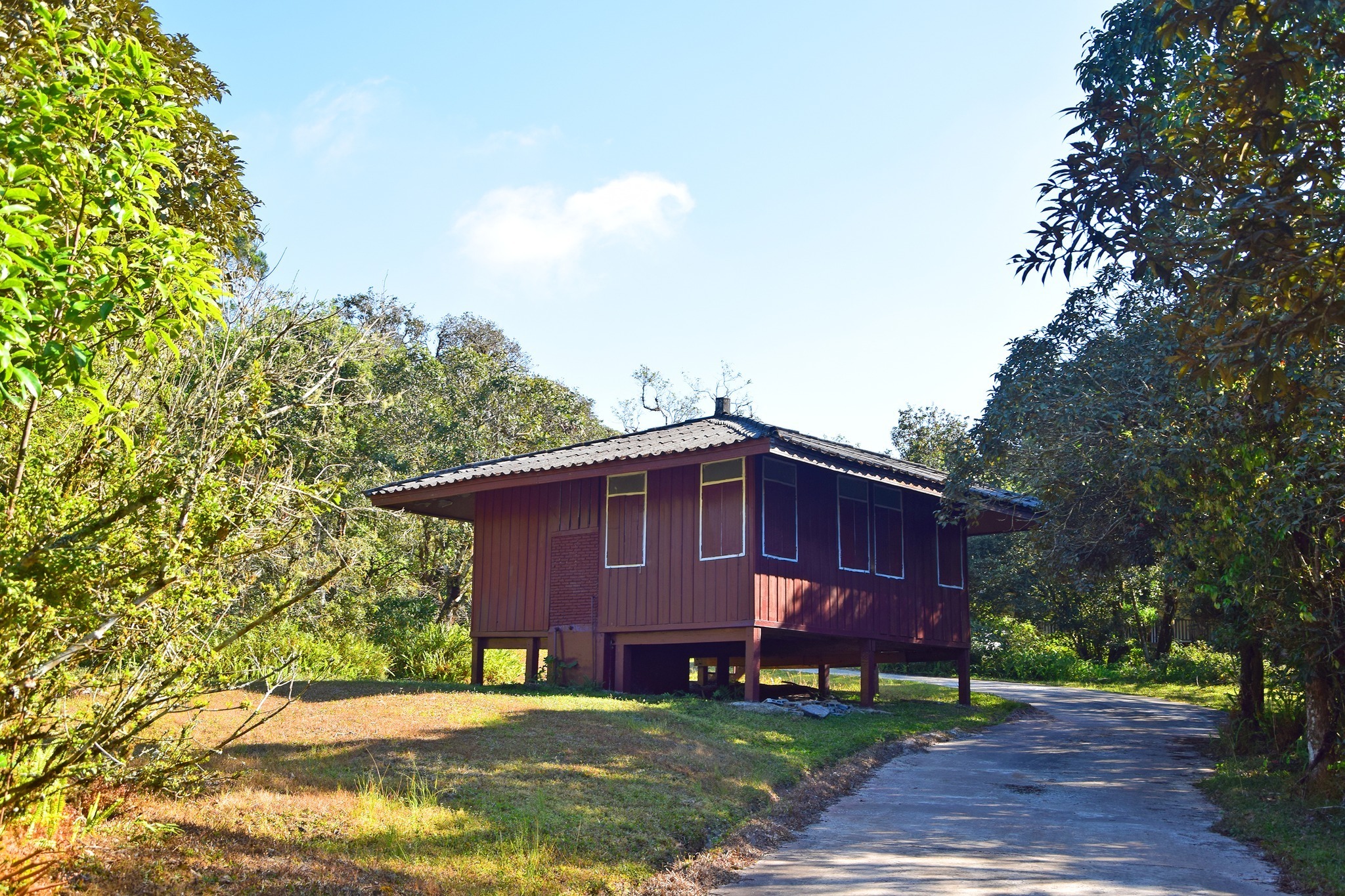
Phu Luang Wildlife Sanctuary has several bungalows for tourists to stay overnight at the Khok Nok Kraba Forest Protection Unit, but camping is not permitted for the safety of tourists from wild animals at night.
In case you want to stay overnight, you must reserve a house in advance via the Message channel of the Phu Luang Wildlife Sanctuary Facebook page: เขตรักษาพันธุ์สัตว์ป่าภูหลวง-จังหวัดเลย
In addition, in cases where you want to go on a nature study in other forest protection units over a long distance, you must also apply for permission to enter the area. The officer will send details of the steps for applying for permission via the Message channel on the Facebook page or call 06 4024 0743.
For short nature trails, such as the Chaloem Prakiat Nature Trail and Lan Suriyan Nature Trail, no prior permission is required. You can simply walk in and register for a visit at the Kok Nok Kraba Protection Unit.
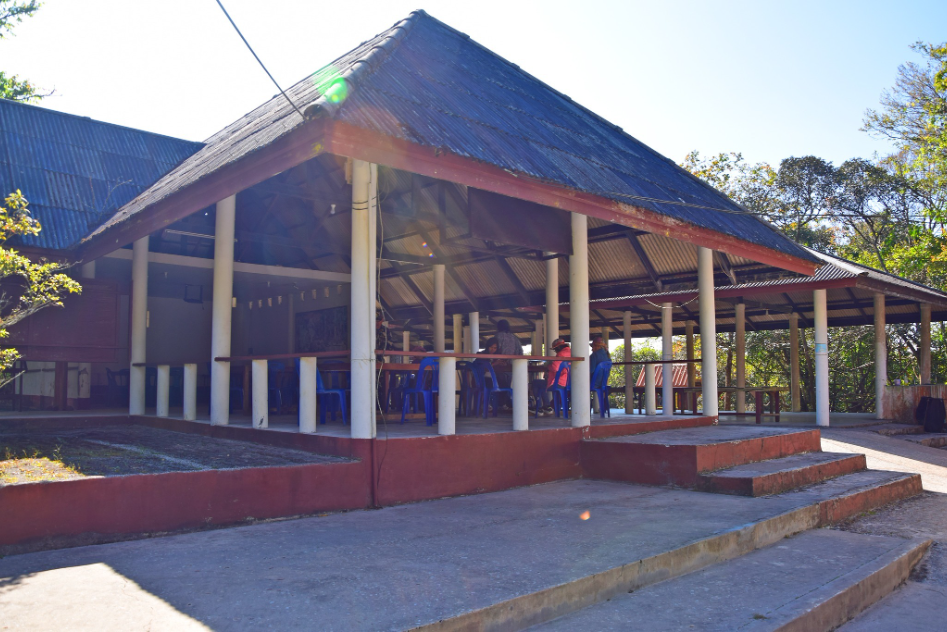
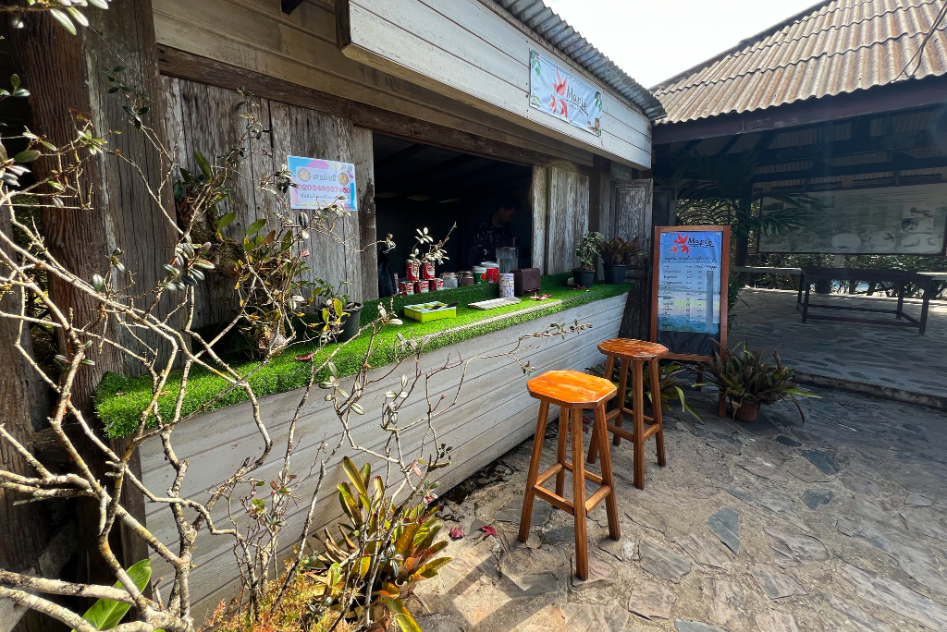
At the tourist service center at the Kok Nok Kraba Forest Protection Unit, there is a restaurant serving food to tourists. It serves a la carte dishes and also sells drinks and snacks and there are dining and relaxation area. Additionally, there is also a coffee shop available. Anyone who is tired from hiking can stop by to refresh themselves.
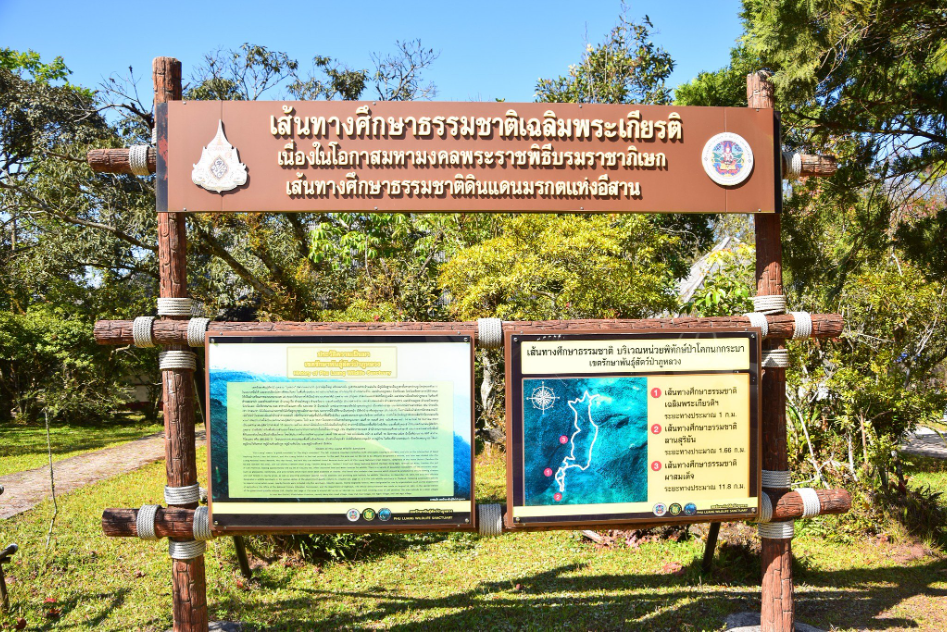
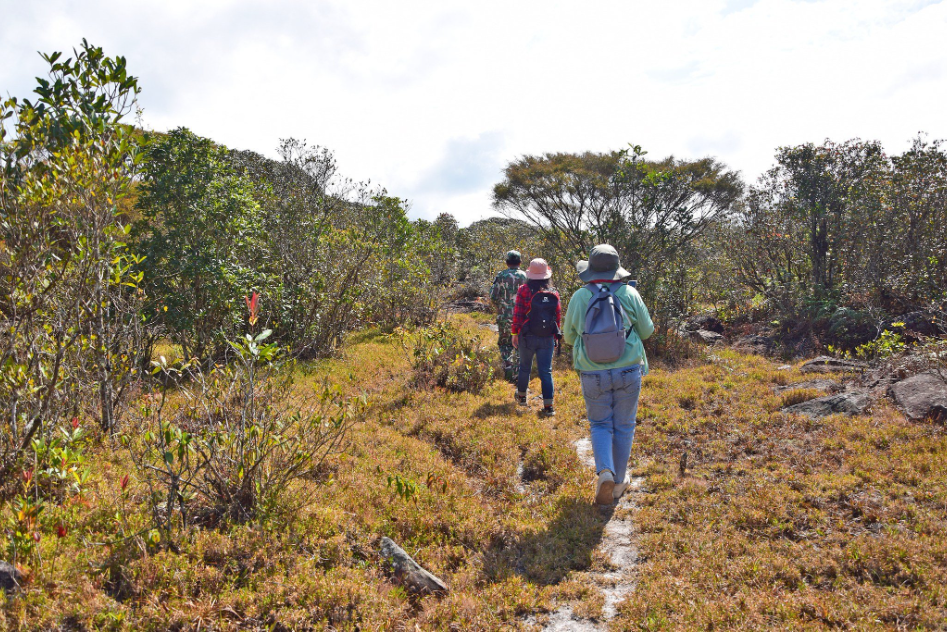
At the Kok Nok Kraba Forest Protection Unit, there are 3 nature trails starting from:
1. Chaloem Prakiat Nature Trail, 1 kilometre long.
2. Lan Suriyan Nature Trail, 1.8 kilometers long.
3. Pha Sadet Nature Trail, 11.8 kilometers long.
We chose to walk the Lan Suriyan Nature Trail, a distance of 1.8 kilometers. A kind forest officer took us on a walk and introduced us to various plants. It was very informative.
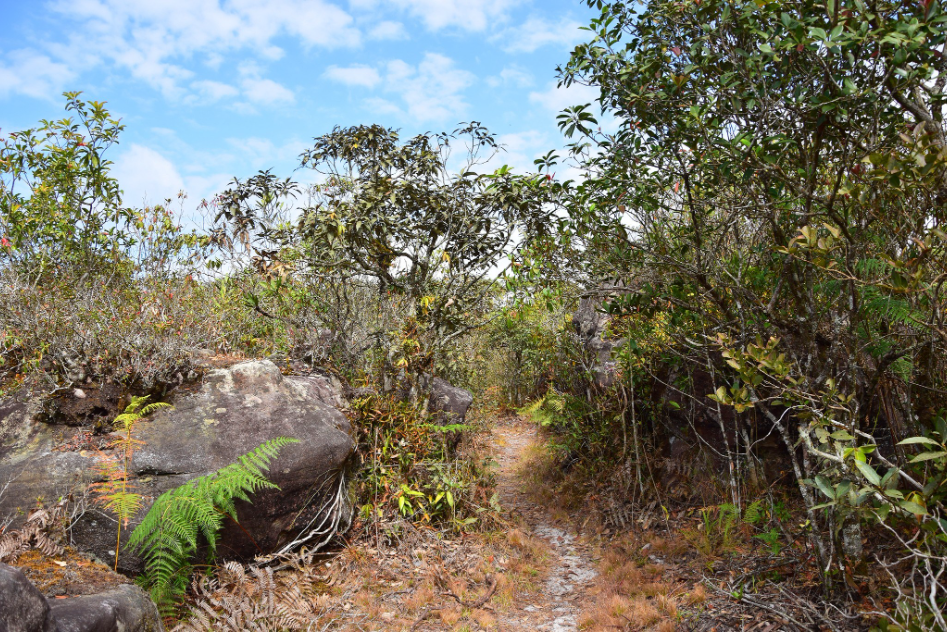
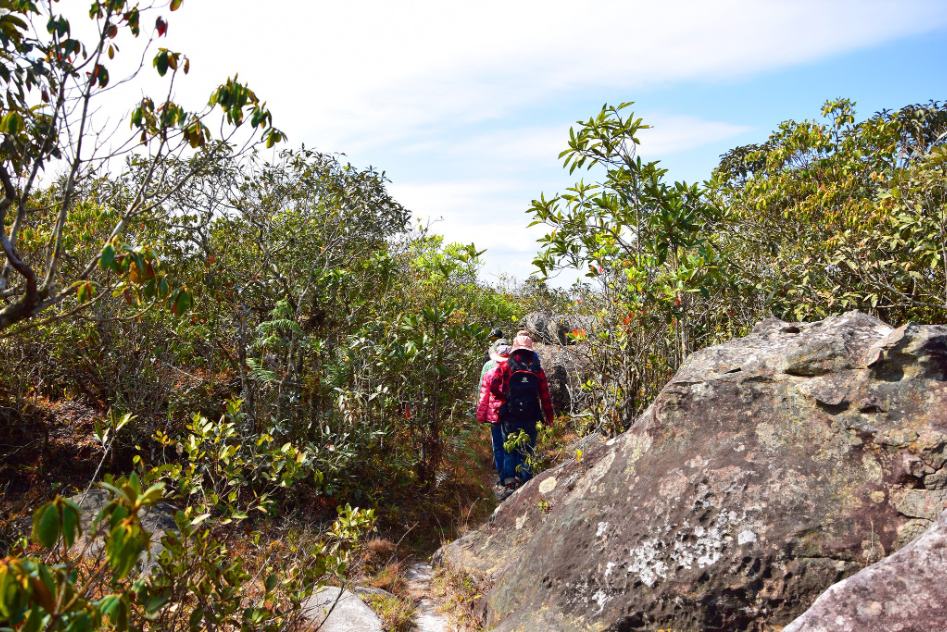
Lan Suriyan Nature Trail is a flat trail almost the entire way, walking through an open forest with not too tall and dense trees. However, if you go hiking in winter, even though it is sunny, the air is cool and comfortable.
Equipment you should have when hiking:
- Hat to prevent UV.
- Long-sleeved shirt and pants to prevent scratches from branches.
- Shoes with deep, non-slip treads that fit the ankles and are comfortable to walk in.
- Drinking water.
- Personal medication.
- Photography equipment such as a camera or mobile phone to capture the beauty of nature.
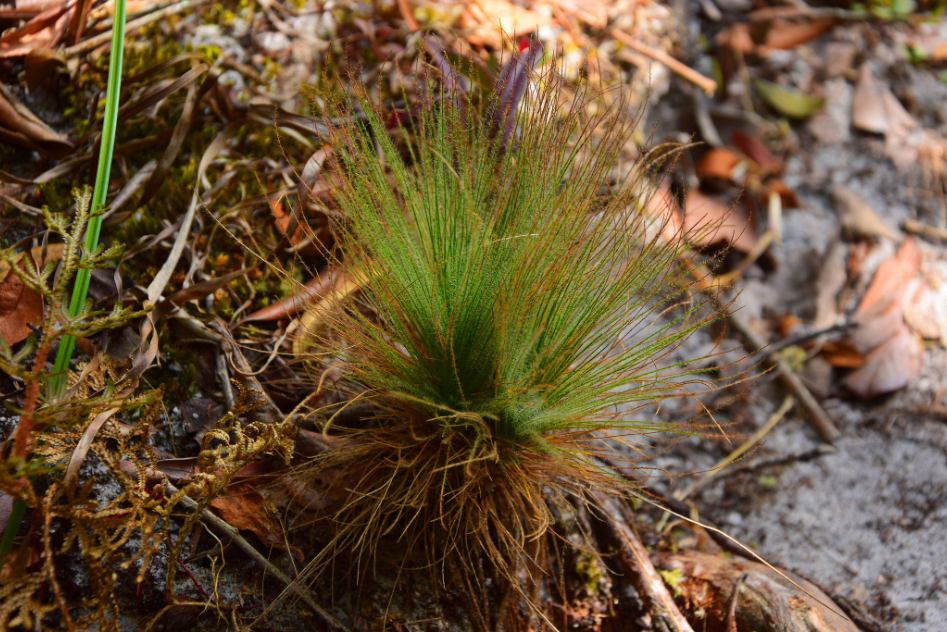
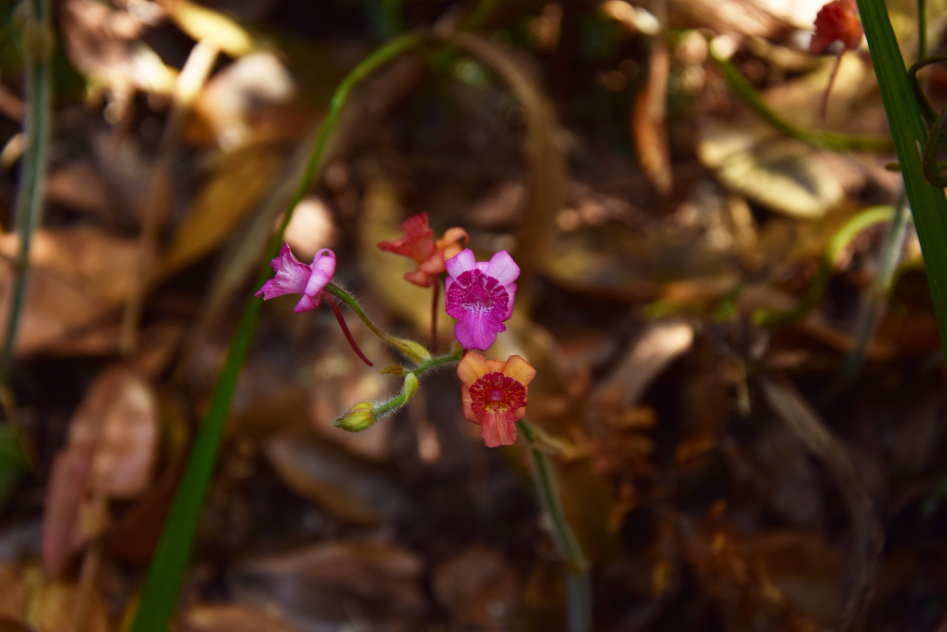
Not long into the forest, the forest officer pointed out many rare trees and flowers, such as:
“Dapsilanthus disjunctus (Mast.)”
“Ground orchid” (Spathoglottis) has small, beautiful, and cute flowers.
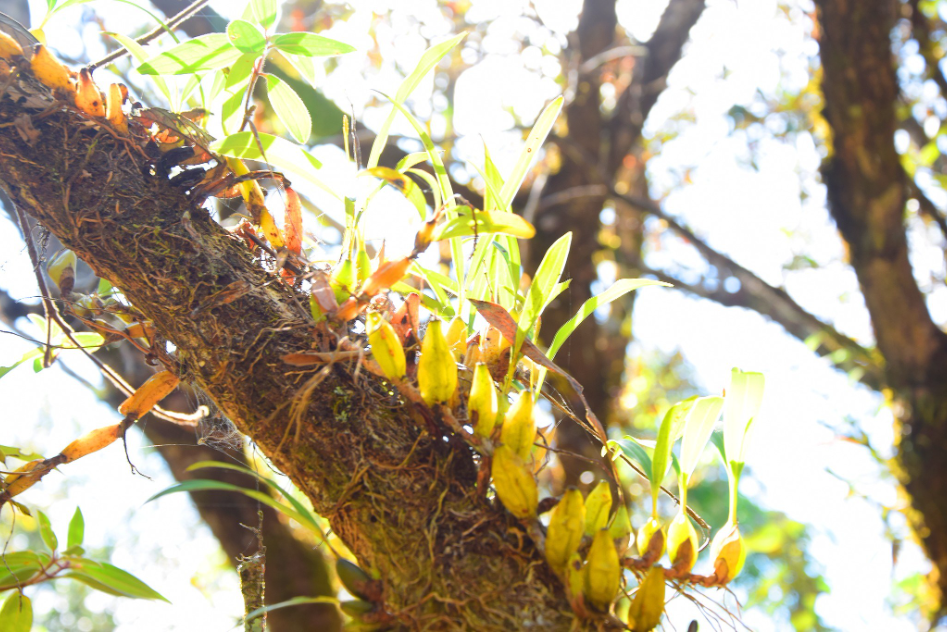
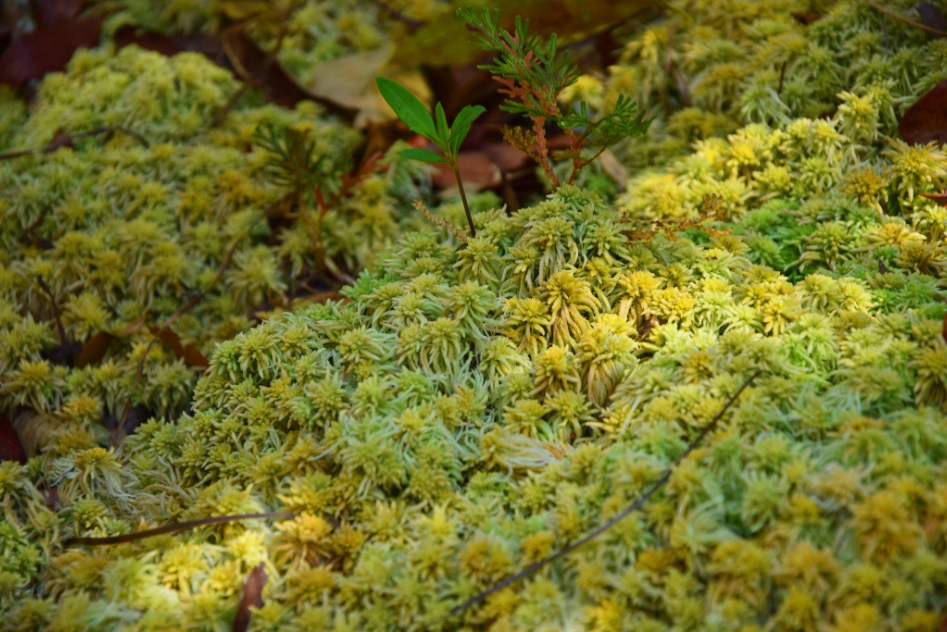
“Otochilus fuscus Lindl.” It is an orchid that grows on trees, but when I went there, it had not bloomed yet.
“Sphagnum spp.” It is a perennial moss that often covers the soil and bark of trees in areas with cool, humid climates.
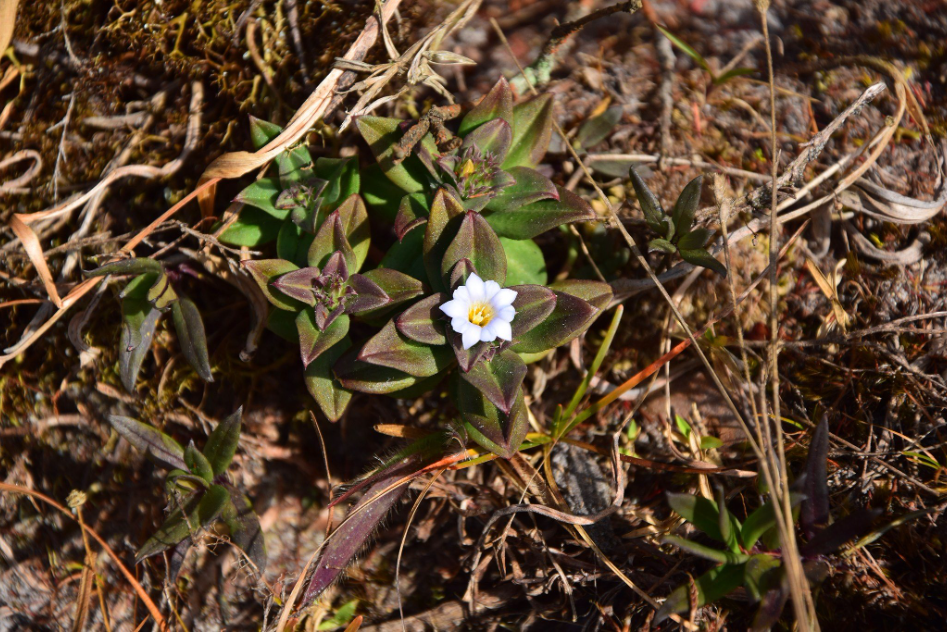
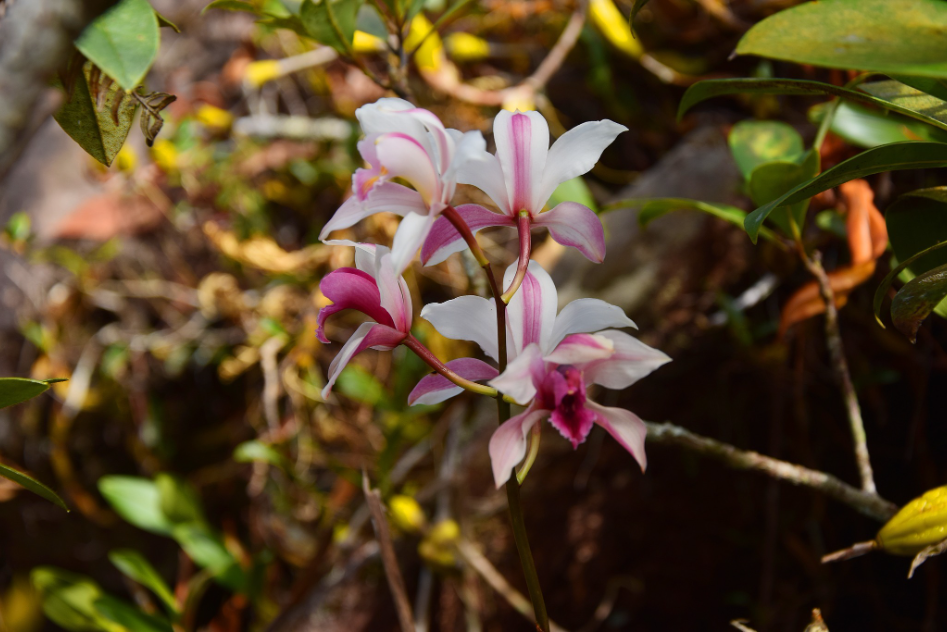
“Gentiana nudicaulis Kurz subsp. Lakshnakarae (Kerr) Halda” Rare plant species in Thailand can be found on high mountains in the northeastern region, such as Phu Luang, Phu Kradueng, and Phu Hin Rong Kla.
“Cymbidium insigne” Large ground orchids found in Thailand at Phu Luang and Phu Kradueng.
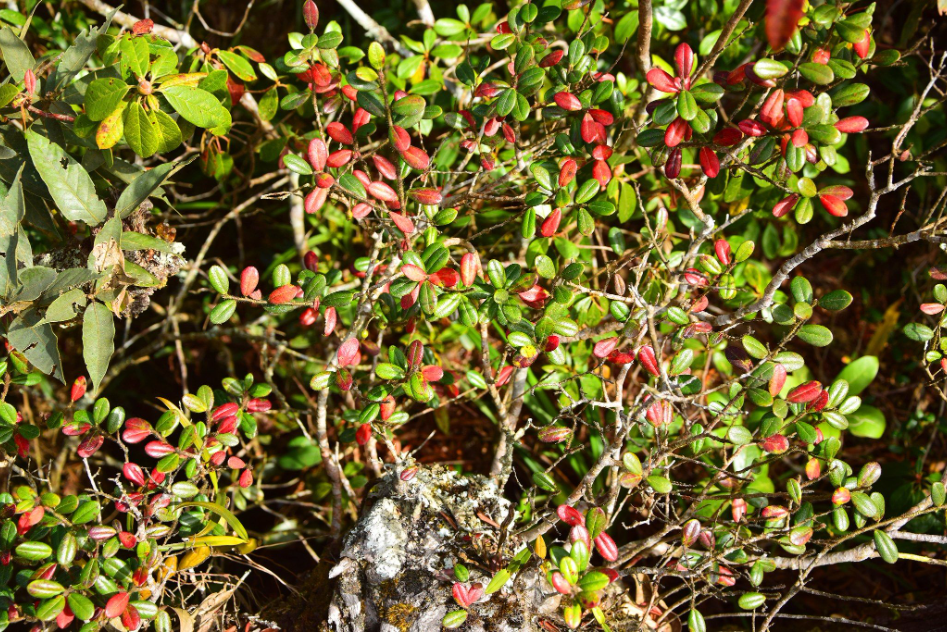
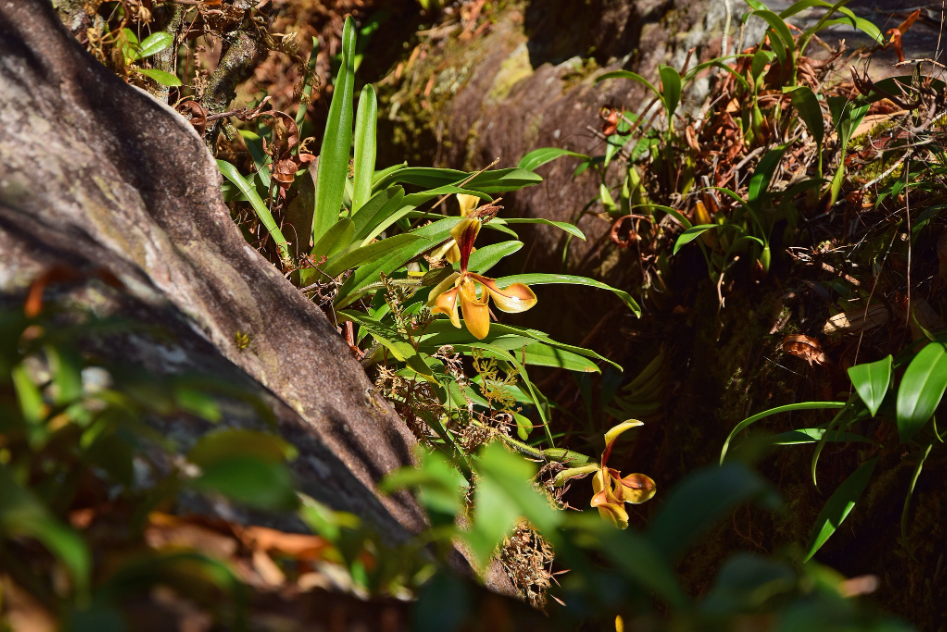
“Agapetes saxicola Craib” It is an epiphytic shrub found in the northern and northeastern regions, growing on tree trunks or rocks in montane forests at an altitude of 1200–1500 meters.
“Paphiopedilum villosum (Lindl.) Stein” It is an epiphytic orchid found in montane forests at an altitude of 1,200-1,500 meters in the northern and northeastern regions of Thailand.
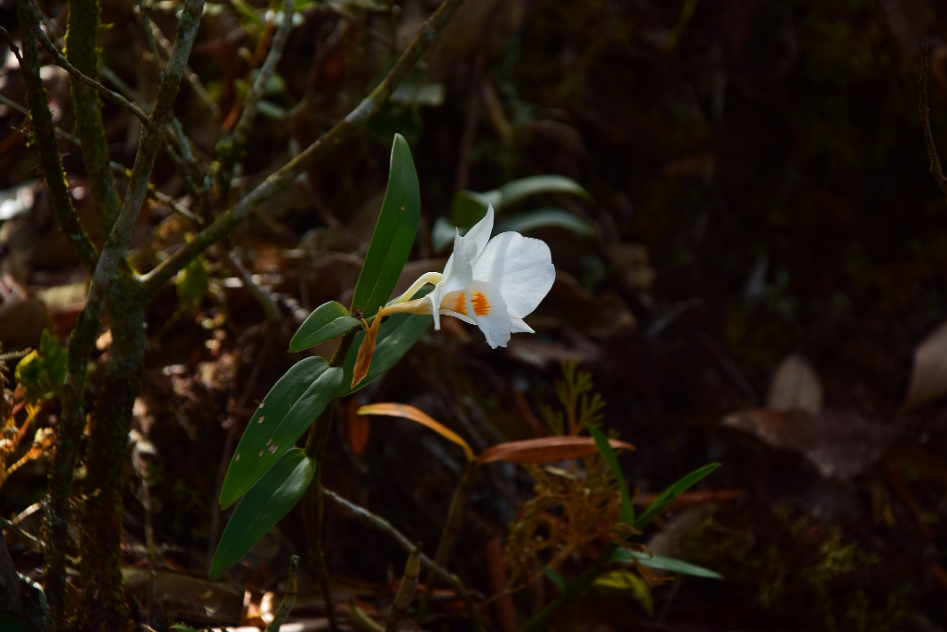
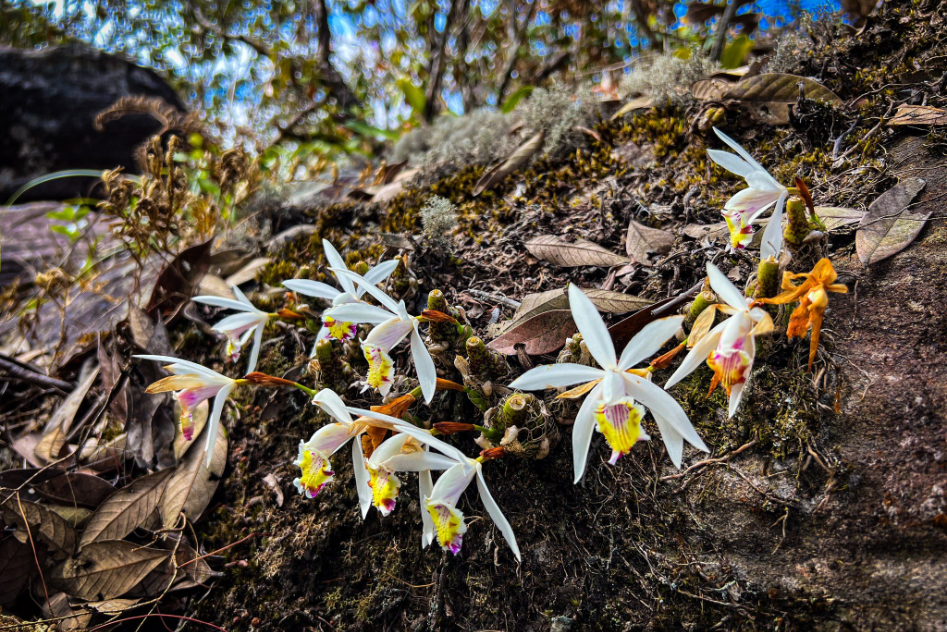
“Dendrobium infundibulum” It is a type of orchid, is white flowers with orange lines on the lip. The flowers are fragrant. In Thailand, they can be found in Chiang Mai, Mae Hong Son, Nan, Loei, and Songkhla.
“Pleione maculata Lindl.” It is an orchid that often grows in the crevices of rocks. It is found in the rainforests of the northern and northeastern regions of Thailand. It is a rare orchid.
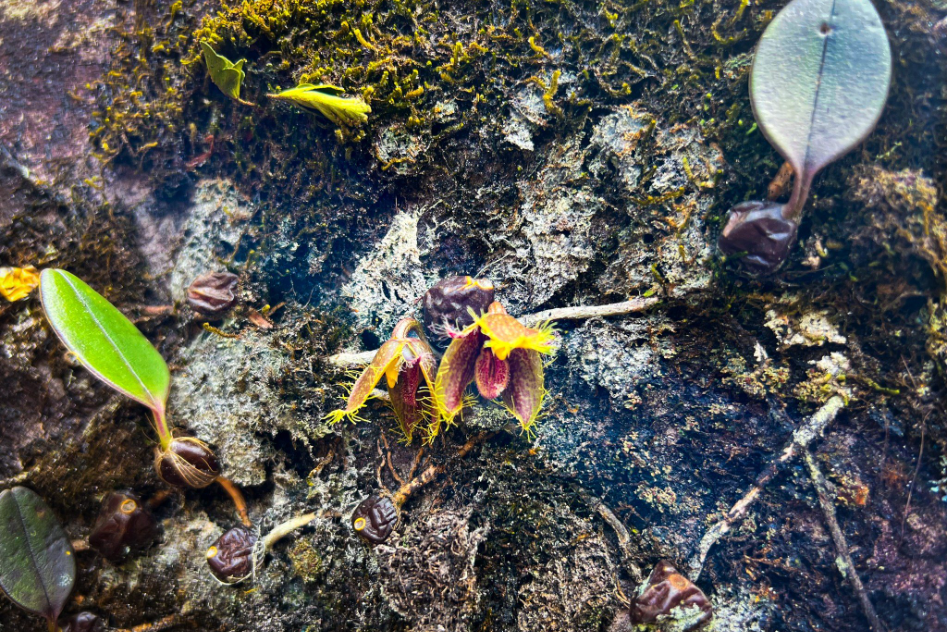
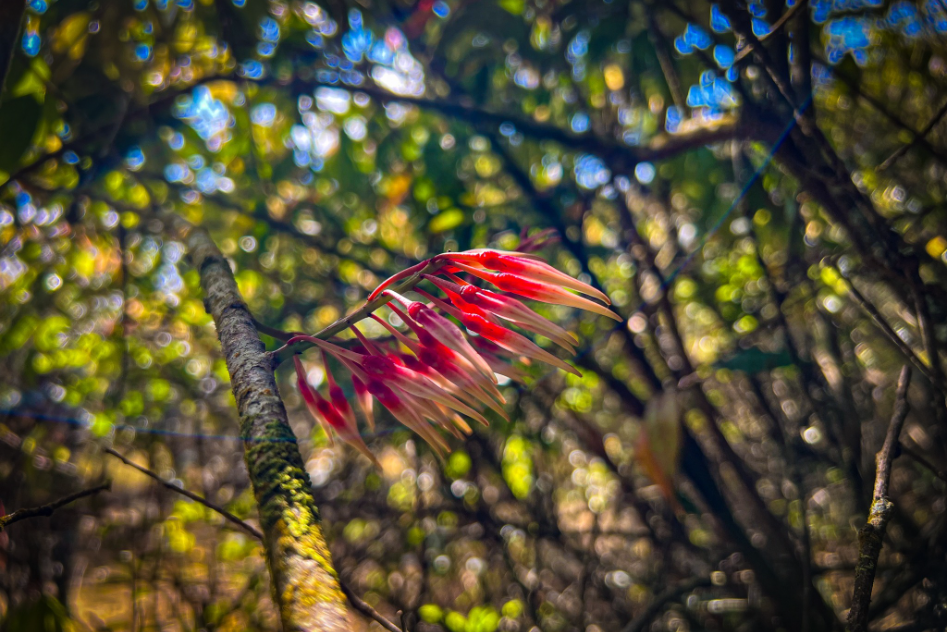
“Bulbophyllum dayanum Rchb.f.” It is an epiphytic orchid that grows on trees in tropical and montane forests at an altitude of 500–1300 meters. The sepals are greenish-brown or purple with yellow fringed edges. In Thailand, it is found in Phitsanulok in the north, Loei in the northeast, Trat in the east, and Ranong and Krabi in the south.
“Agapetes lobbii C.B.Clarke” Epiphytic shrubs grow on the trunks of large trees. Flowers bloom in long clusters. When the flowers bloom, they turn upside down to the ground, resembling a bell. It is a rare plant found in the northern and northeastern regions of Thailand. It grows in montane forests that are relatively open and have cool weather all year round, at an altitude of 1,100 - 2,300 meters.
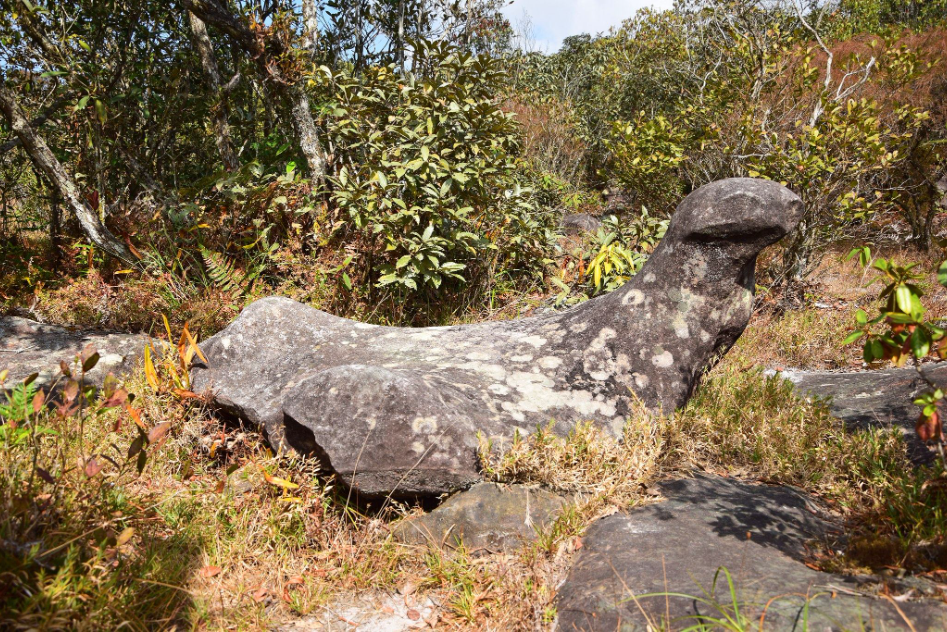
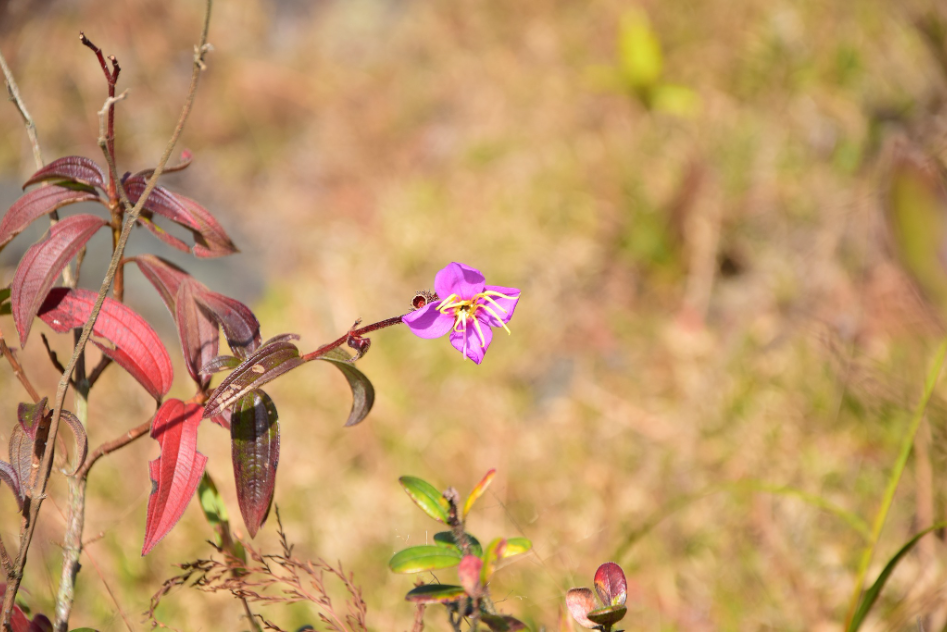
“Nok Kraba Rock” is a natural rock that has been eroded by wind, sun, and rainwater until it has the shape similar to a Kraba bird.
“Osbeckia stellata Buch.-Ham. ex Ker Gawl. (Melastomataceae)” It is a shrub with flowers that bloom in clusters. The petals are purple and the stamens are bright yellow.
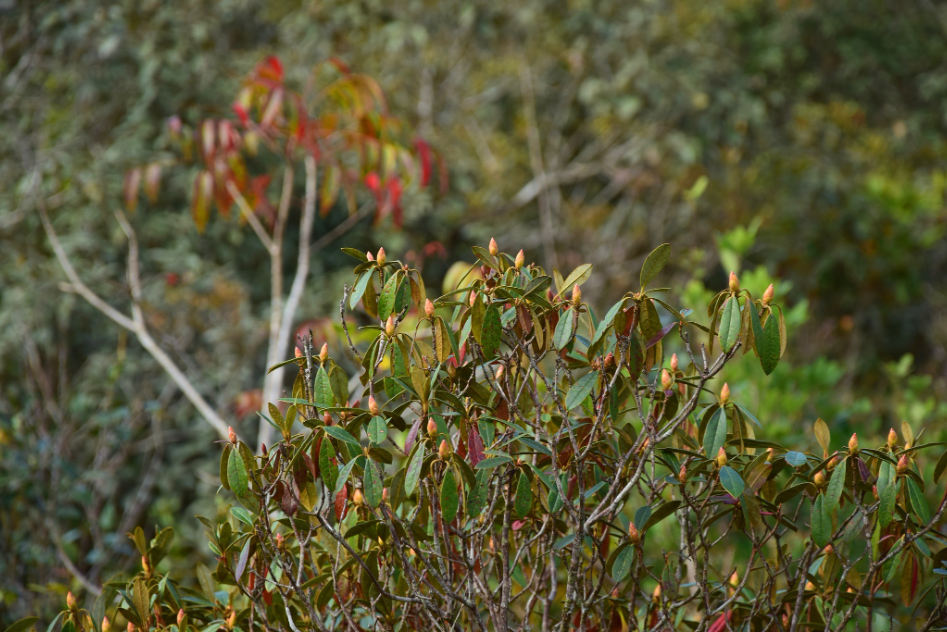
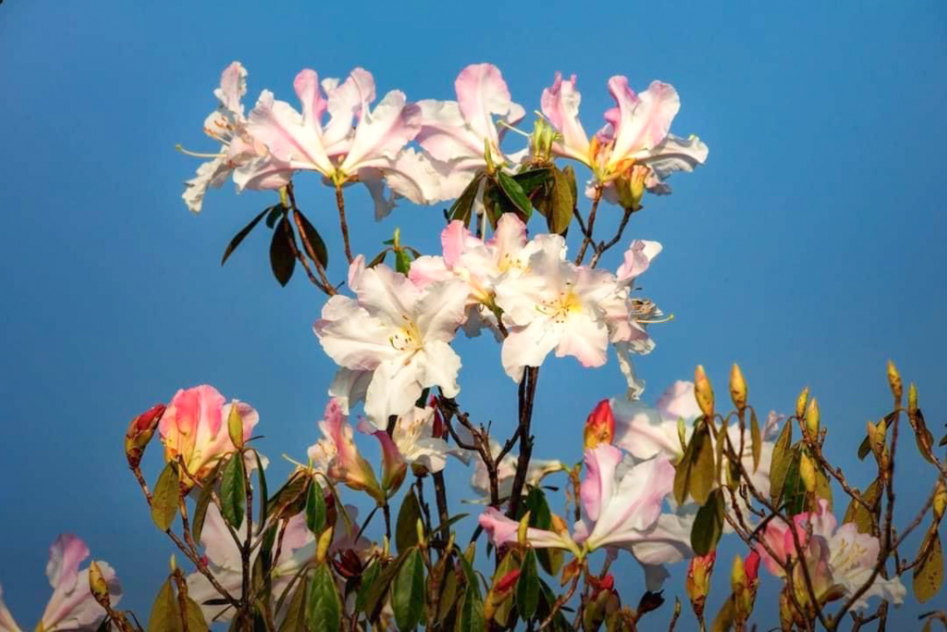
“White wild rose (Rhododendron ciliicalyx Franch.)” In Thailand, it is found in the northern and northeastern regions, growing in pine forests or open areas on limestone mountains at an altitude of 1,000-2,200 meters, such as Phu Luang, Doi Inthanon, etc.
When we went, the flowers were still in bud. The forest officer informed us that they would bloom in February.
Photo of a blooming white wild rose.
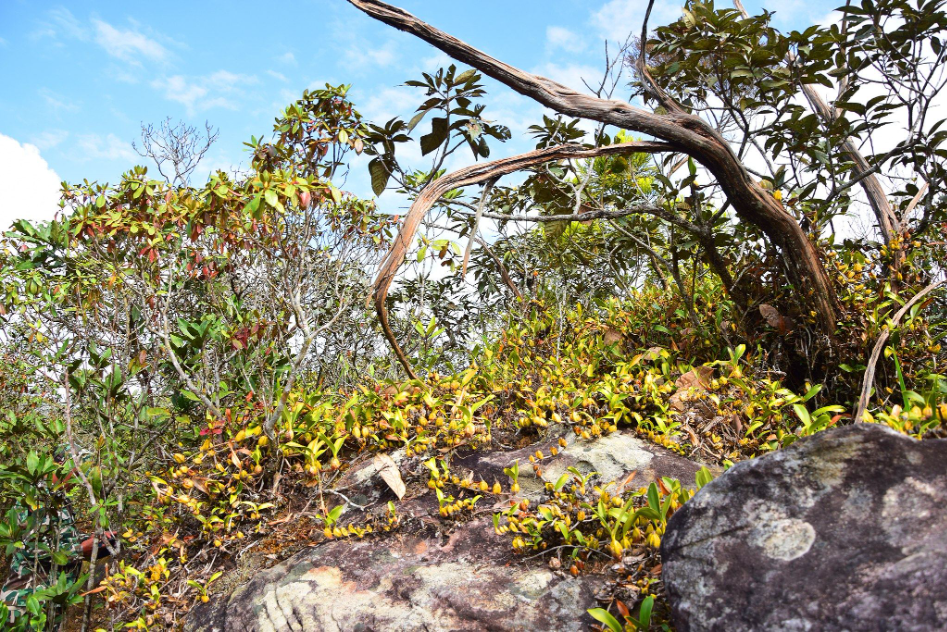
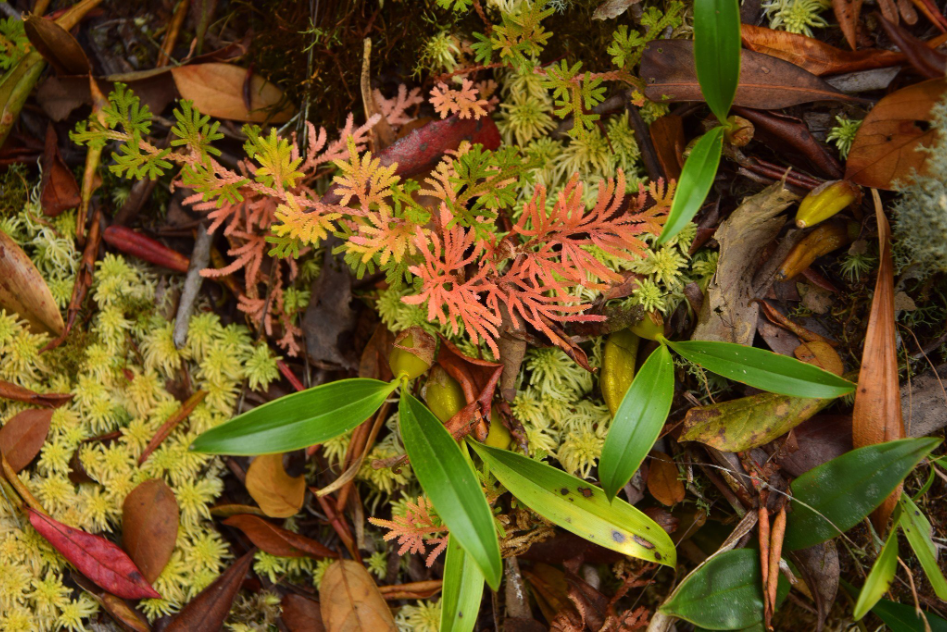
The orchids cover large rocks, indicating the abundance of Phu Luang.
In this photo, there are orange-leaf ferns, orchids, and Sphagnum spp., which are beautiful colors of the forest.
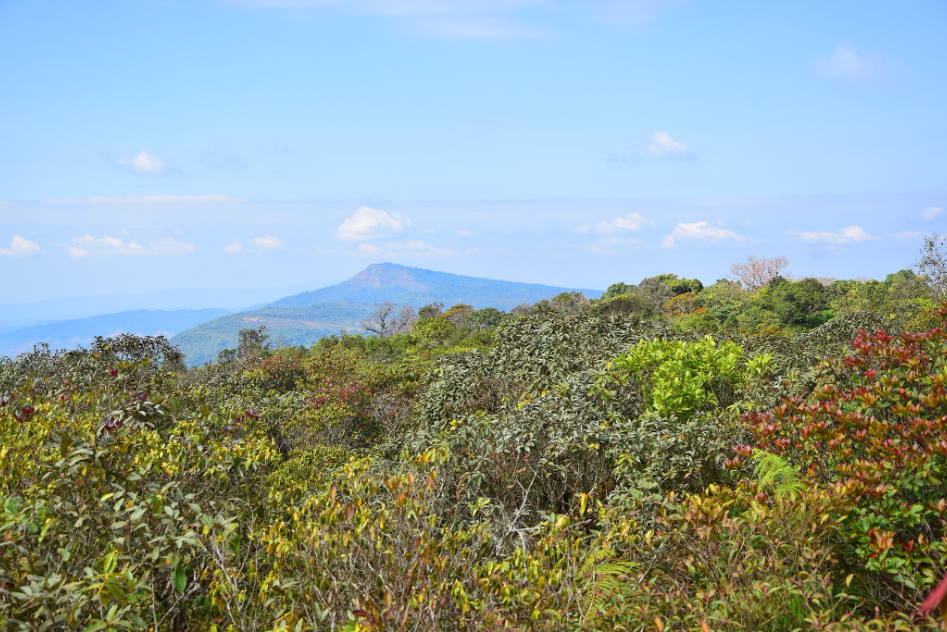
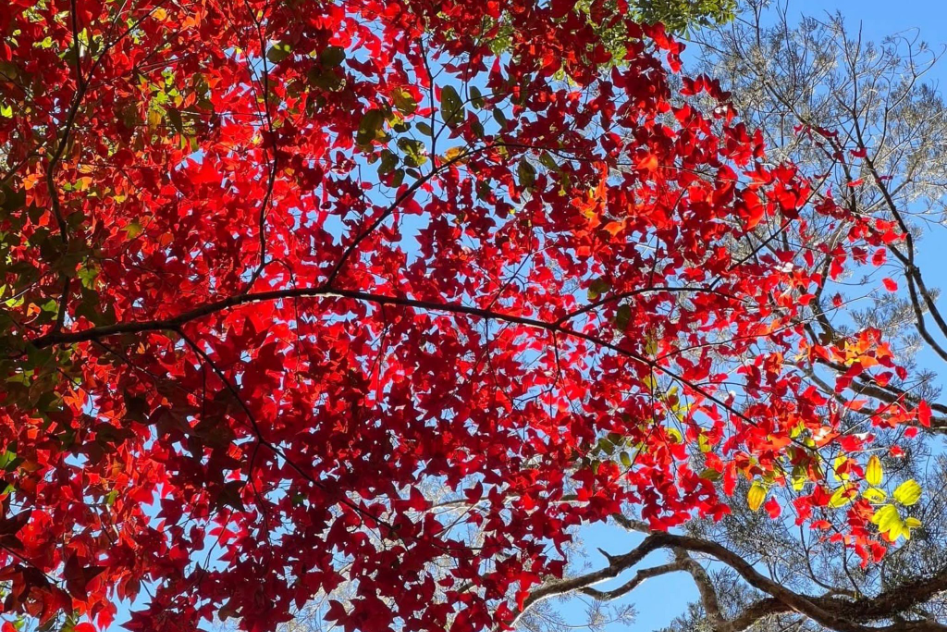
For those who are fascinated by the beauty of wild orchids, come and see nature at Phu Luang, we guarantee you won't be disappointed.
When walking along the nature trail until near the end, you will find a maple grove. The forest officer informed that on Phu Luang, the maple leaves are usually red during the New Year period until mid-January.
“Maple or Acer calcaratum Gagnep” It is a perennial tree found on high mountains with cool weather in the northern and northeastern regions of Thailand, such as Chiang Mai and Loei. In the winter, the leaves change color from green to red or reddish orange and fall to the ground in about 2 weeks.
Falling maple leaves add beauty to the forest.
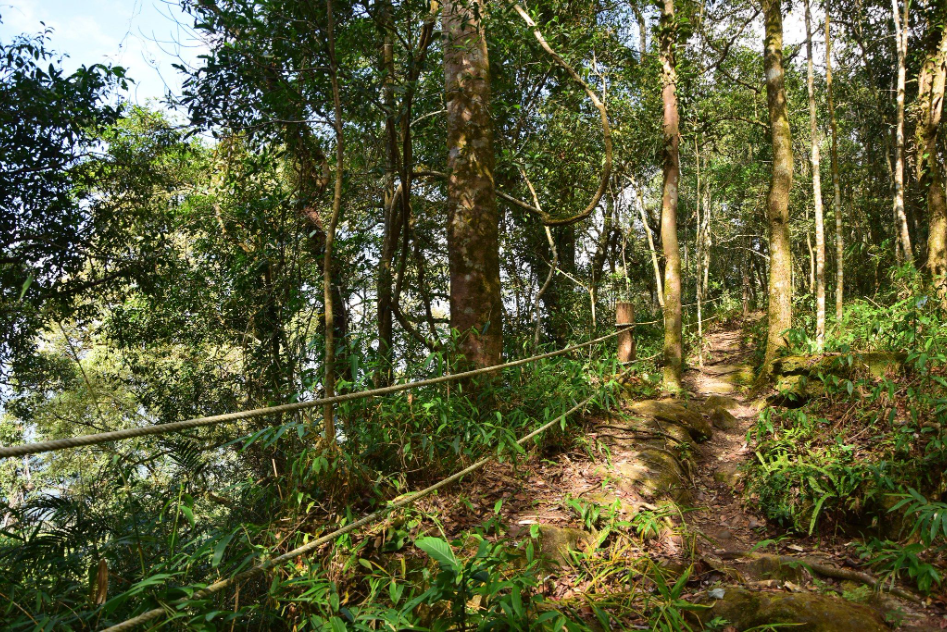
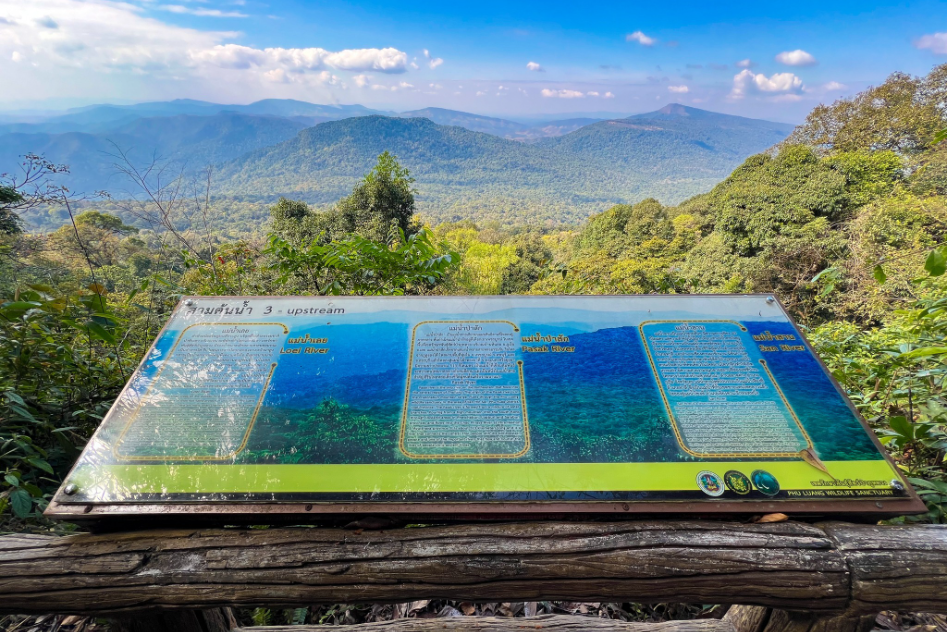
The last part of the trail will walk along the cliff. There is a viewing platform where you can see mountains and green forests.
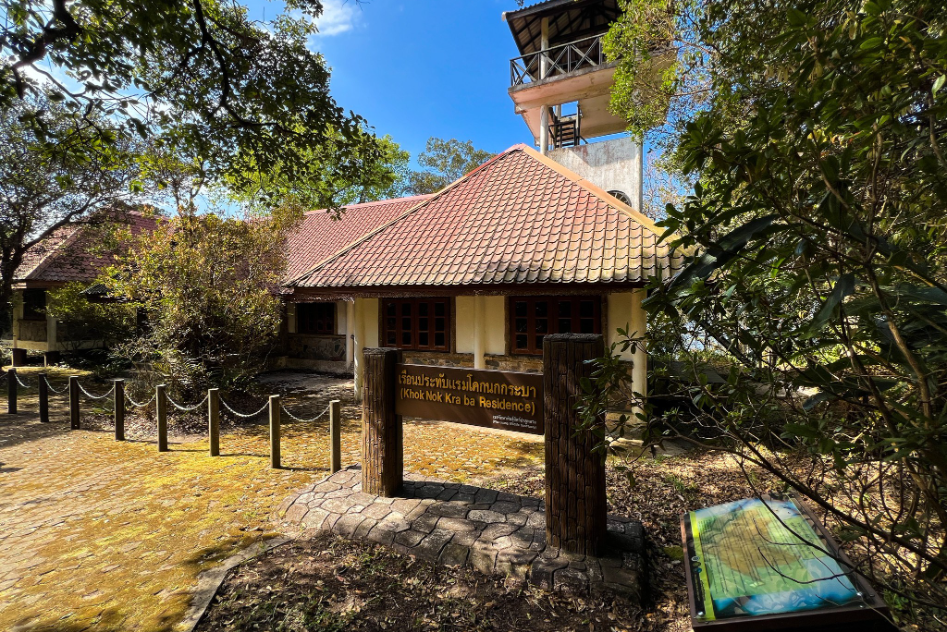
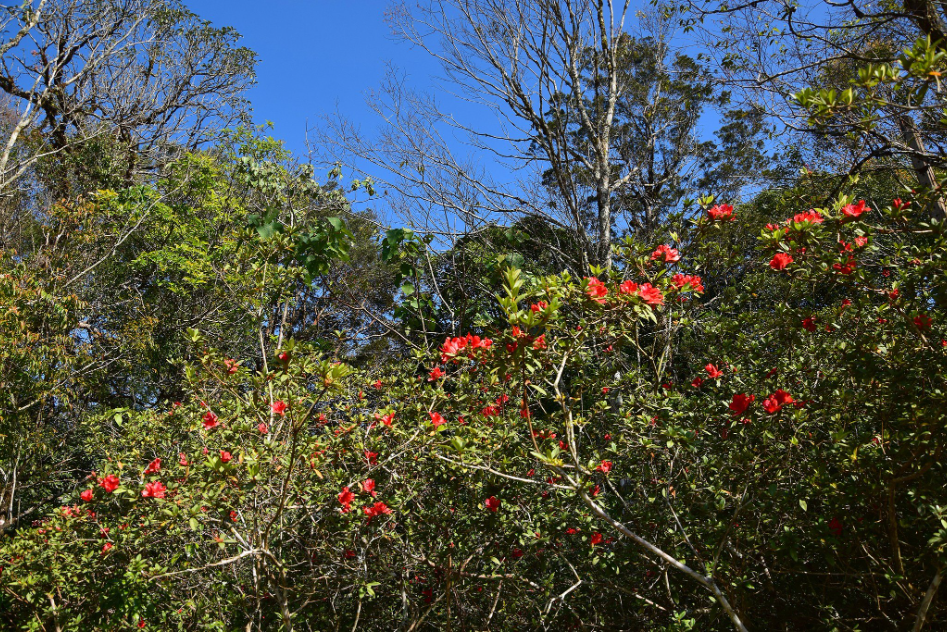
“Kok Nok Kraba Residence” When you arrive here, it means that the Lan Suriyaan Nature Trail has ended. Walk towards the exit sign and you will find the tourist service center a short distance away.
The highlight of the Kok Nok Kraba Tourist Service Center is the red wild rose grove on Phu Luang. The red wild roses start blooming from the end of December to March.
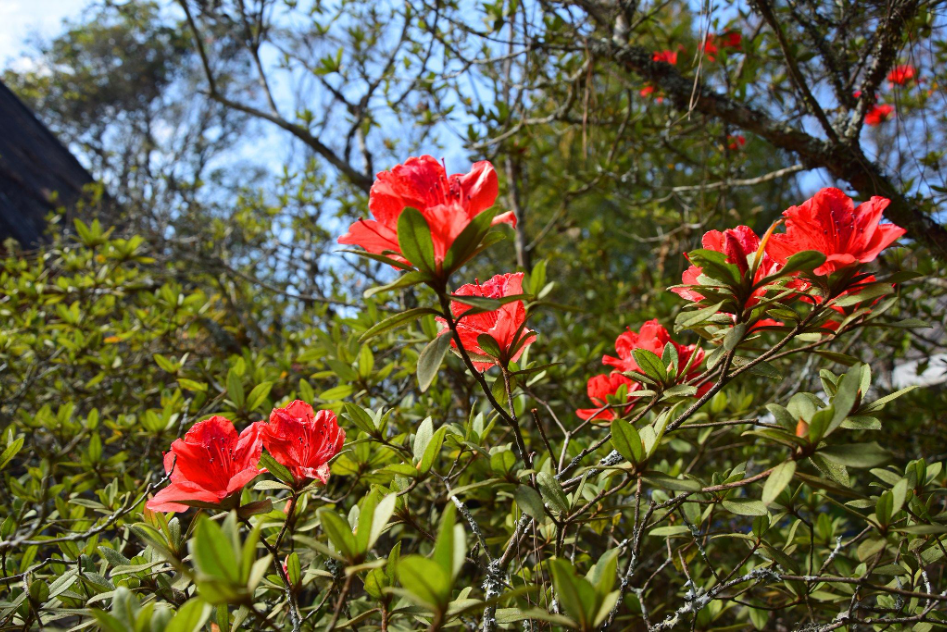
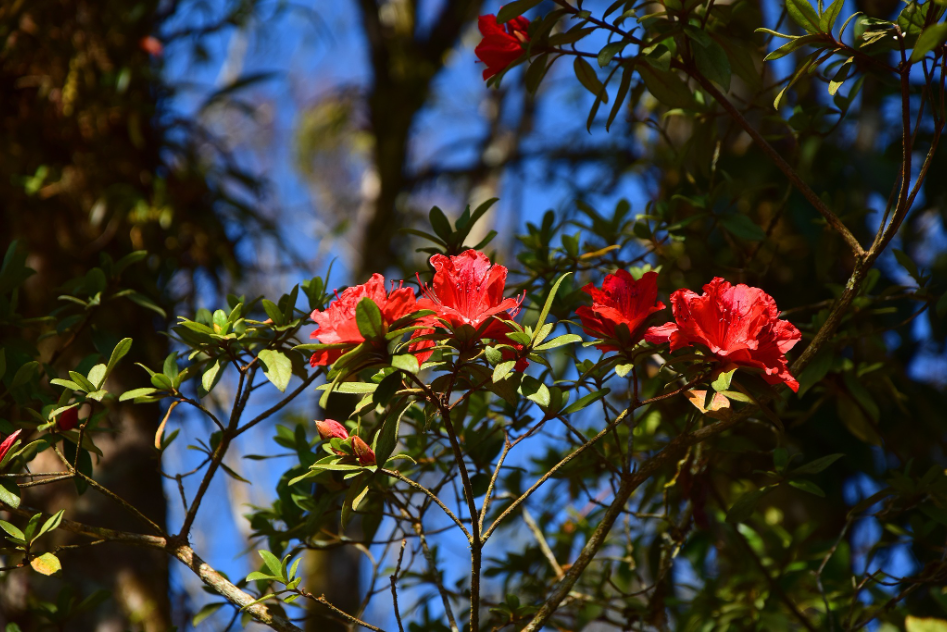
“Red Wild Rose” or “Rhododendron simsii Planch” It is a shrub with red-orange flowers. In Thailand, it is found in the northern and northeastern regions at an altitude of 1,000-2,200 meters, such as Phu Luang, Doi Inthanon, and Doi Mon Chong.
Nature trails at the Kok Nok Kraba Forest Protection Unit in Phu Luang Forest Sanctuary take from half a day to a full day, depending on which route you choose. Officials usually allow visitors to enter the area from 8:30 a.m. and try to have tourists return to the mountain around 3:00 p.m. - 4:00 p.m. Therefore, tourists should plan your trip well.
Tips and precautions while trekking.
- Don't walk off the path. May be harmed and lost.
- Follow the instructions of the officers.
- Do not pick, pluck, write or destroy trees or natural plants.
- Do not leave trash along the route.
- Do not make loud noises that disturb nature and fellow hikers along the route.


